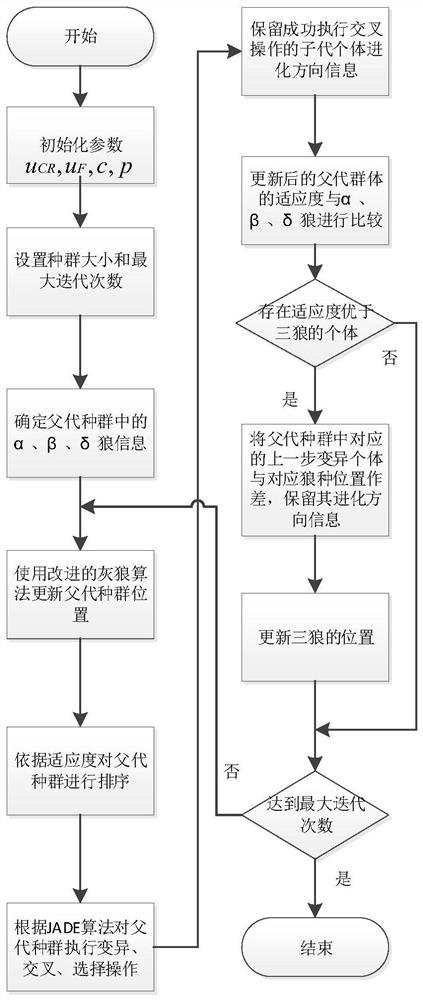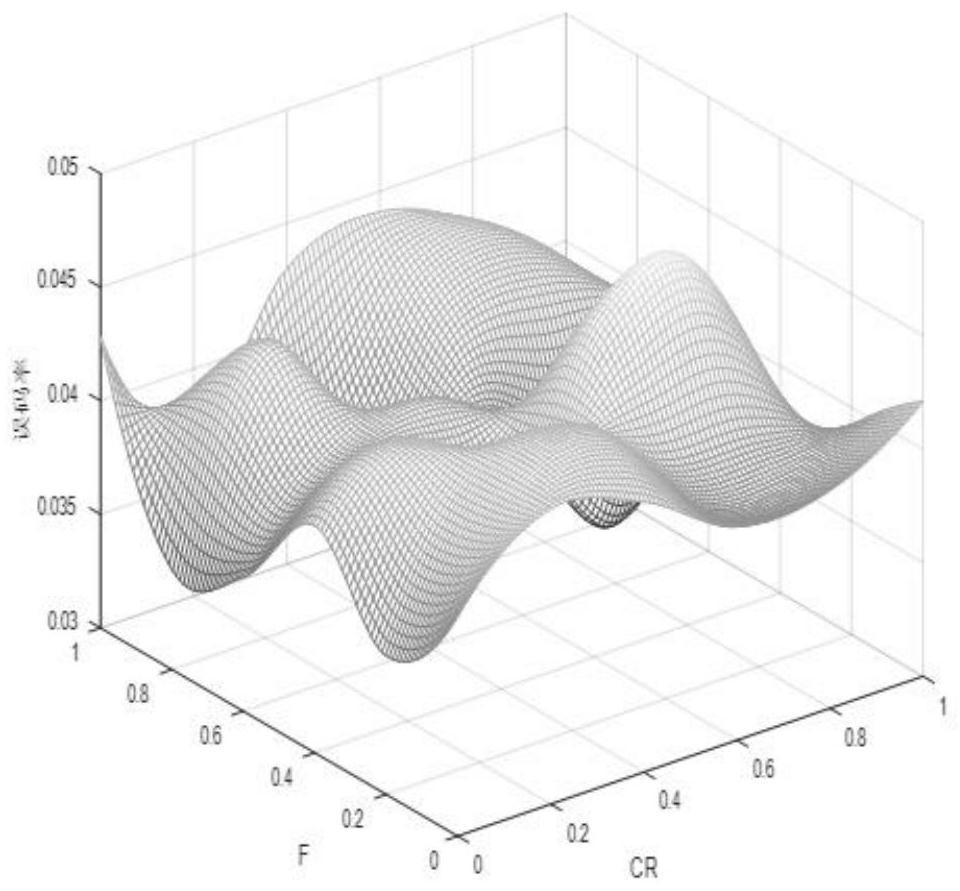A Robust Multiuser Detector Design Method
A design method and multi-user technology, applied in the field of multi-user detection, can solve the problem of high bit error rate in communication systems
- Summary
- Abstract
- Description
- Claims
- Application Information
AI Technical Summary
Problems solved by technology
Method used
Image
Examples
Embodiment 1
[0097] This embodiment provides a robust multi-user detector design method, such as figure 1 , the method includes:
[0098] Step 1, initialize the relevant parameters of the algorithm, set the mean parameters of the crossover probability and variation factor, the population size and the maximum number of iterations;
[0099] Step 2, use the opposite learning method to initialize the parent population, determine the three wolves in the parent population, the three wolves including the solution with the best fitness are named α wolf, the suboptimal solution is named β wolf, and the third optimal solution is named δ Wolf;
[0100] Step 3, use the improved gray wolf algorithm position update equation to update the parent population, and sort the population individuals according to the fitness value from large to small;
[0101] Step 4: Use the parent population to generate offspring crossover mutants, and when the fitness value of the offspring mutants is better than the parent...
example 1
[0130] In order to prove that the initialization parameter setting of the algorithm adopted in this embodiment has little influence on the bit error rate, assuming that the signal power of all users is equal, the number of users is 10, the data signal transmission length is 10000bit, and when the generalized signal-to-noise ratio is 5db, iterative When the number of times is 5, the hybrid gray wolf optimization algorithm is used for multi-user detection. The relationship between the initialization parameter setting and the bit error rate is as follows: figure 2 and image 3 shown. The simulation experiment results show that since the initialization parameters of the algorithm used in this embodiment can be adjusted adaptively, the four parameters involved in the algorithm have little influence on the bit error rate. It can be seen from the figure that the fluctuation range of the bit error rate is only 0.015% to 0.02%.
example 2
[0132] In order to verify the superiority of the method designed in this embodiment over the traditional method, the simulation example will verify the performance of the Hybrid Gray Wolf Optimization Algorithm (HGWO) used in this embodiment from multiple algorithm simulation conditions. Assume that when the signal power of all users is equal, the number of users is 10, the data signal transmission length is 10000bit, and the generalized signal-to-noise ratio is 5db, Figure 4 The relationship diagram between the number of iterations of the algorithm and the accuracy rate of the estimated bit information is given.
[0133] From Figure 4 It can be seen that the convergence speed of the algorithm adopted in this embodiment is extremely fast, and the algorithm starts to converge when the number of iterations is 5, and the bit error rate is also low. However, if traditional genetic algorithm, differential evolution algorithm and single gray wolf optimization algorithm are used, ...
PUM
 Login to View More
Login to View More Abstract
Description
Claims
Application Information
 Login to View More
Login to View More - R&D
- Intellectual Property
- Life Sciences
- Materials
- Tech Scout
- Unparalleled Data Quality
- Higher Quality Content
- 60% Fewer Hallucinations
Browse by: Latest US Patents, China's latest patents, Technical Efficacy Thesaurus, Application Domain, Technology Topic, Popular Technical Reports.
© 2025 PatSnap. All rights reserved.Legal|Privacy policy|Modern Slavery Act Transparency Statement|Sitemap|About US| Contact US: help@patsnap.com



